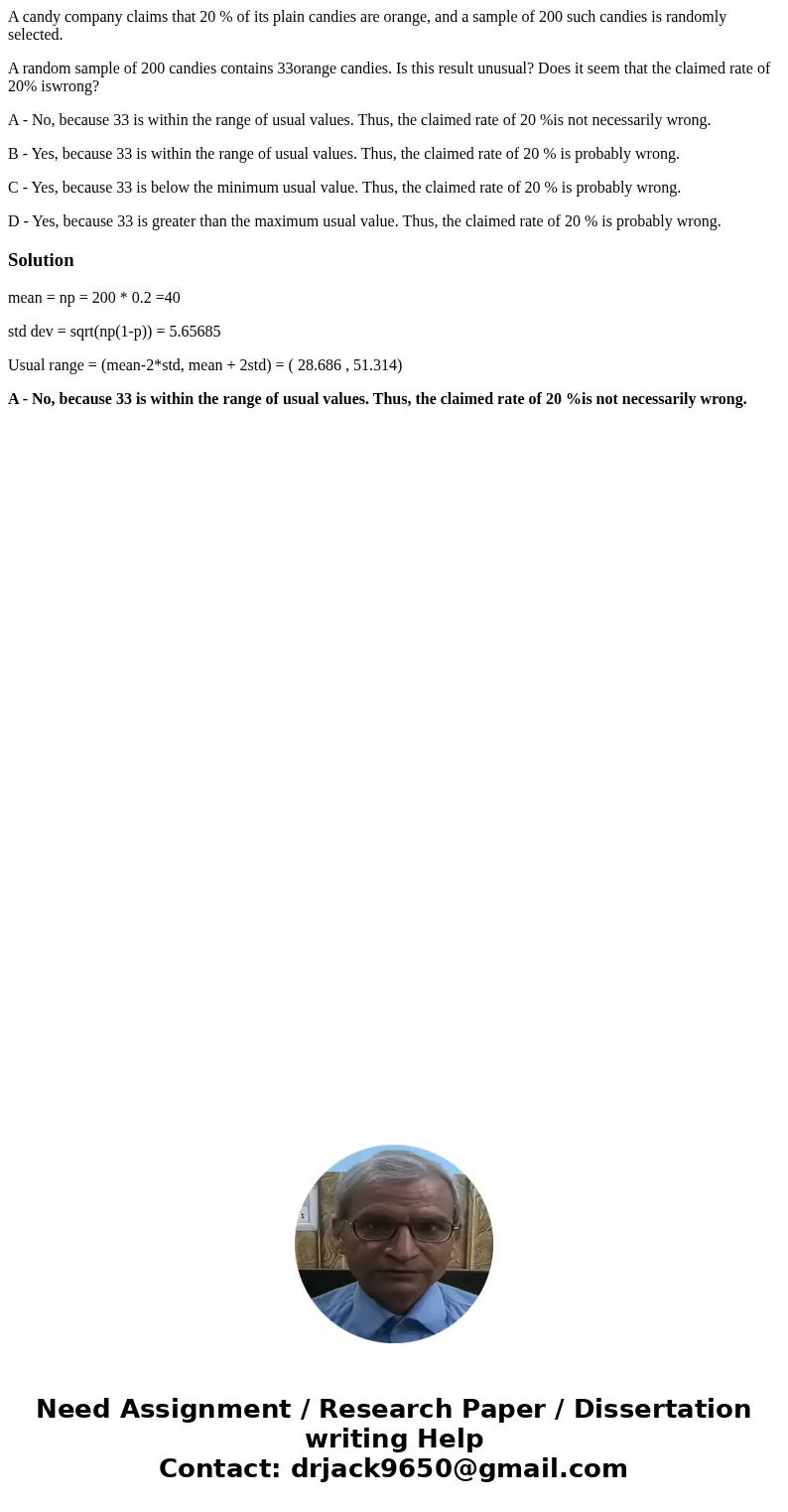A candy company claims that 20 of its plain candies are ora
A candy company claims that 20 % of its plain candies are orange, and a sample of 200 such candies is randomly selected.
A random sample of 200 candies contains 33orange candies. Is this result unusual? Does it seem that the claimed rate of 20% iswrong?
A - No, because 33 is within the range of usual values. Thus, the claimed rate of 20 %is not necessarily wrong.
B - Yes, because 33 is within the range of usual values. Thus, the claimed rate of 20 % is probably wrong.
C - Yes, because 33 is below the minimum usual value. Thus, the claimed rate of 20 % is probably wrong.
D - Yes, because 33 is greater than the maximum usual value. Thus, the claimed rate of 20 % is probably wrong.
Solution
mean = np = 200 * 0.2 =40
std dev = sqrt(np(1-p)) = 5.65685
Usual range = (mean-2*std, mean + 2std) = ( 28.686 , 51.314)
A - No, because 33 is within the range of usual values. Thus, the claimed rate of 20 %is not necessarily wrong.

 Homework Sourse
Homework Sourse